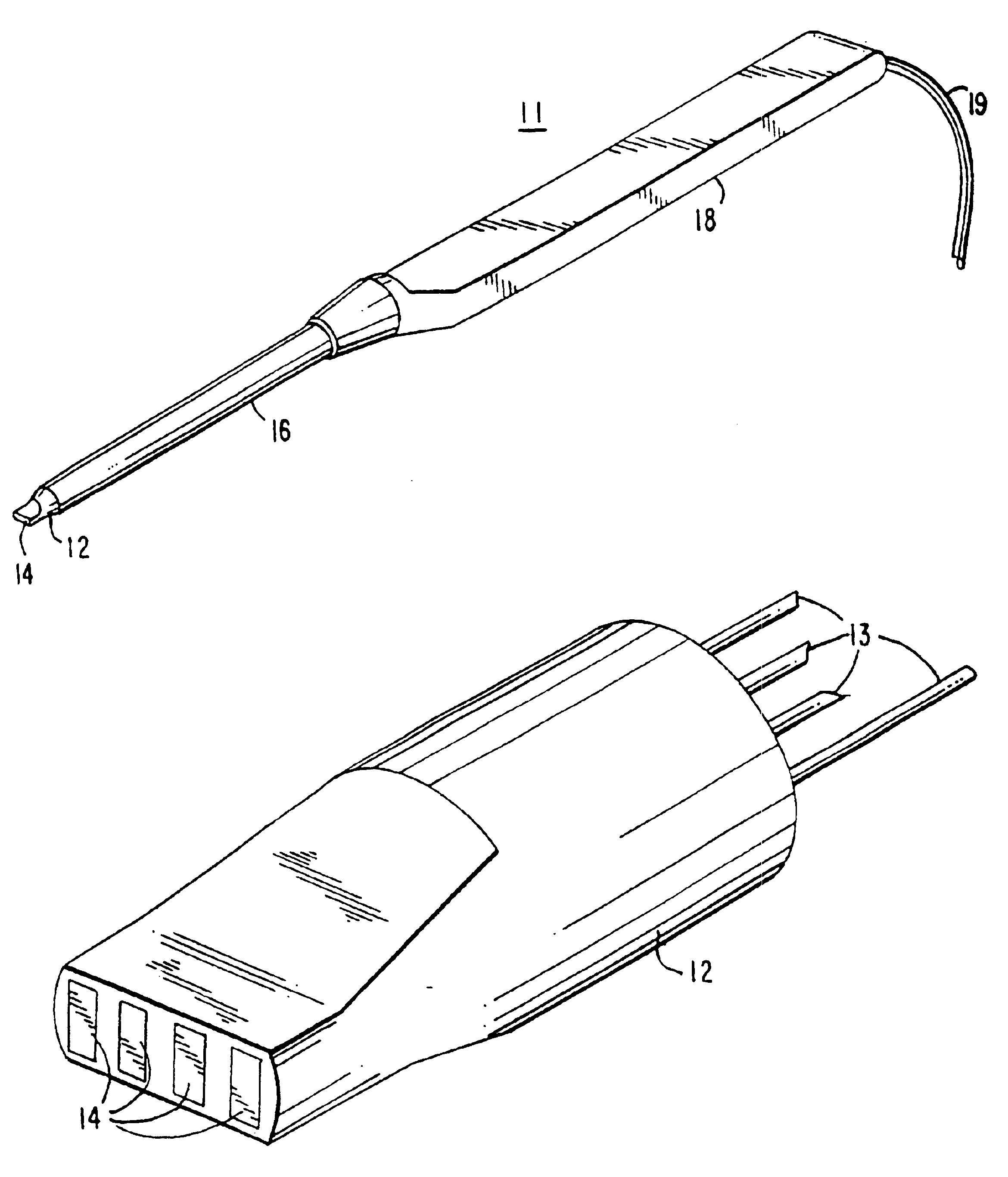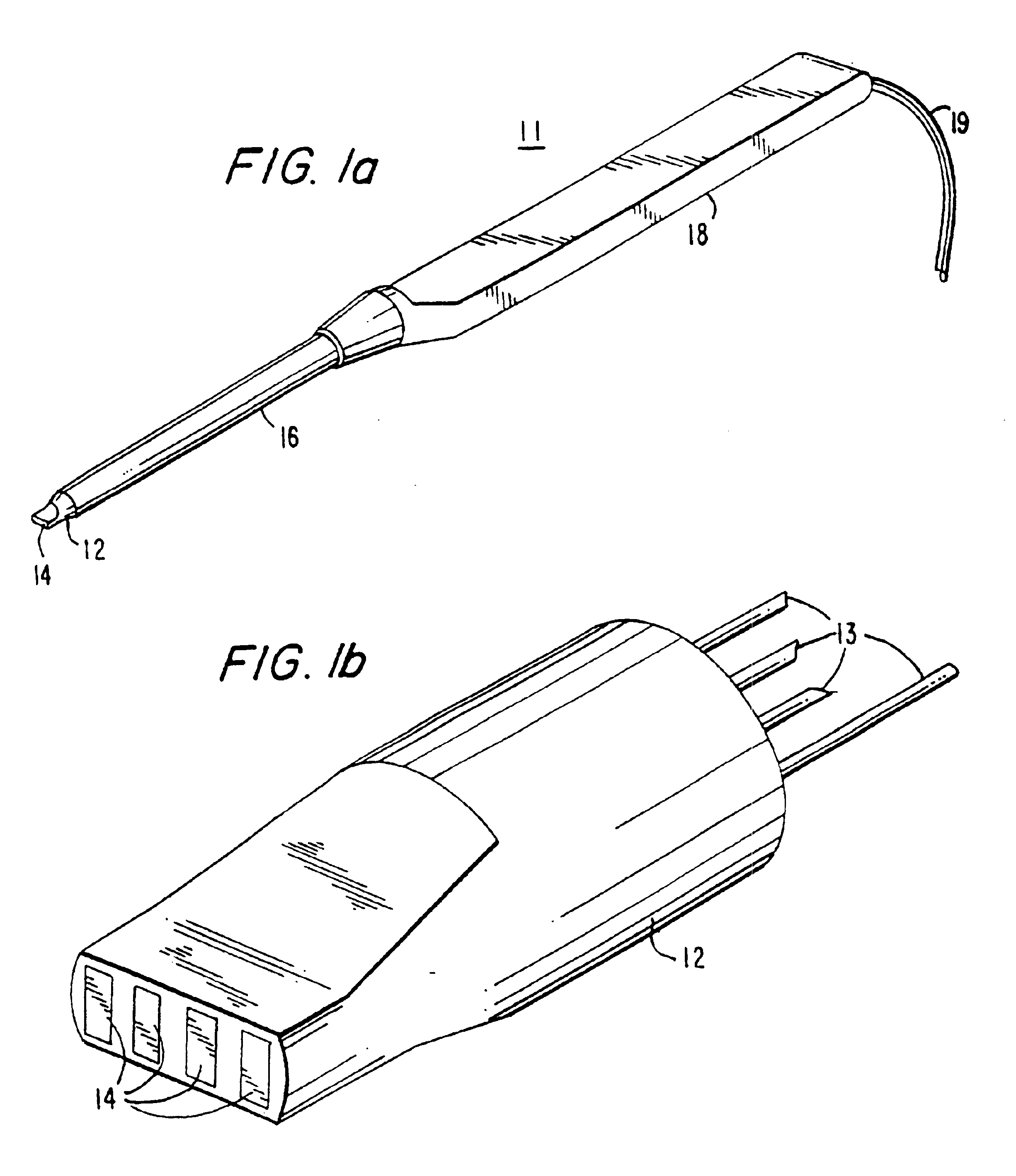Apparatus for recognizing tissue types
a tissue type and apparatus technology, applied in the field of tissue type recognition, can solve the problems of ambiguous diagnosis of tissue types, patient may have suffered tissue damage, bed sores, etc., and achieve the effect of removing the ambiguity of any one measuremen
- Summary
- Abstract
- Description
- Claims
- Application Information
AI Technical Summary
Benefits of technology
Problems solved by technology
Method used
Image
Examples
Embodiment Construction
Referring to FIG. 1a, there is shown an exemplary tissue-type recognizing probe 11 in accordance with the principles of the present invention. A tip 12 is coupled to a handle 18 via a shaft 16. The tip 12 has a number of electrodes 14 at its front to establish electrical contact with a tissue specimen (not shown). FIG. 1b details the electrodes 14 at the front of the tip 12. Electrodes 14 at the front of the tip 12 are connected by wires 13 to control circuitry which may be in the handle 18 of FIG. 1a or in a separate console connected via a cable 19. The electrodes 14 can be used in pairs to measure the pulse response of the tissue as described below or as a group of four to perform four terminal conductivity measurements. Their type and position may be changed to control the penetrating depth of the measuring current.
The effectiveness of the electrode 14 contact on a tissue specimen can be checked by making measurements on the three adjacent pairs of the electrodes which should yi...
PUM
 Login to View More
Login to View More Abstract
Description
Claims
Application Information
 Login to View More
Login to View More - R&D
- Intellectual Property
- Life Sciences
- Materials
- Tech Scout
- Unparalleled Data Quality
- Higher Quality Content
- 60% Fewer Hallucinations
Browse by: Latest US Patents, China's latest patents, Technical Efficacy Thesaurus, Application Domain, Technology Topic, Popular Technical Reports.
© 2025 PatSnap. All rights reserved.Legal|Privacy policy|Modern Slavery Act Transparency Statement|Sitemap|About US| Contact US: help@patsnap.com



